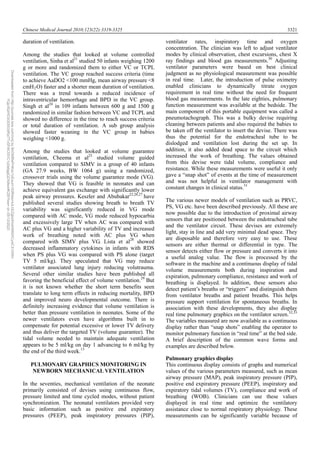This document discusses trends in conventional mechanical ventilation and pulmonary graphics for newborn infants requiring respiratory support. It notes that while survival rates have improved with advances like surfactant therapy, rates of bronchopulmonary dysplasia (BPD) remain high. Gentle ventilation techniques aim to prevent ventilator-induced lung injury and reduce BPD risk. Various conventional ventilation modes are described that provide synchronized, targeted tidal volumes. Current evidence favors volume-targeted over pressure-targeted ventilation due to lower rates of complications, though long-term outcomes are unclear. Bedside pulmonary graphics now allow continuous monitoring of ventilation parameters to optimize support in real-time.






